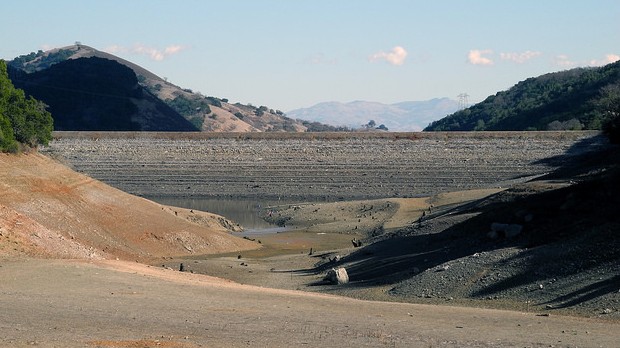The report has drawn fire from some scientists and commentators who say that it leaves out the effects of record-high temperatures in California this year.
Brenda Ekwurzel, senior climate scientist at the Union of Concerned Scientists, wrote in a response that, “The NOAA study points to natural variability, but it is important to note that these random variations are happening in the context of higher overall temperatures caused by climate change and warmer temperatures spell trouble for water in California.”
It’s well understood that high temperatures tend to exacerbate drought impacts, baking moisture out of the ground through increased evaporation and transpiration by plants.
In addition, “Warmer temperatures are widening the gap between water supply and demand by contributing to earlier spring snow melt meaning less water is available when demands are the highest in mid-to-late summer,” said UCS climate scientist Juliet Christian-Smith in the same response. “As global warming continues, decreasing snowpack and earlier snowmelt — coupled with increasing demand for water — will likely exacerbate water shortages.”
Seager says the “main driver” of the drought has been lack of precipitation, which defied the predictive models amid rising carbon emissions, but he and Hoerling agree that it would be useful to “continue the analysis by looking at the land surface hydrology and working out what the role of increasing temperature was,” as Seager put it to reporters in a conference call.
Hydrologist Peter Gleick of the Oakland-based Pacific Institute says the NOAA report lends itself to misinterpretation because of the “fundamental difference between ’cause’ and ‘influence.'”
“Asking whether climate changes ’caused’ the current drought is simply the wrong question,” Gleick wrote in an email to KQED. “While there remains plenty of interesting science to be done about how climate changes will cause extreme events in the future, we already see today a growing and clear influence of climate changes on storms and droughts around the world. The influence of human-caused climate change is already apparent.”
The NOAA scientists acknowledge the historic nature of the drought itself. Seager describes it as “one of the most severe” since 1895, when the state began keeping precipitation records. Even with December coming down on the wet side so far, it’s impossible to say whether this winter will extend the drought or help bring an end to it, according to Seager and Hoerling.
“In the last three years, California lost essentially one whole year’s worth of precipitation,” Seager notes.

